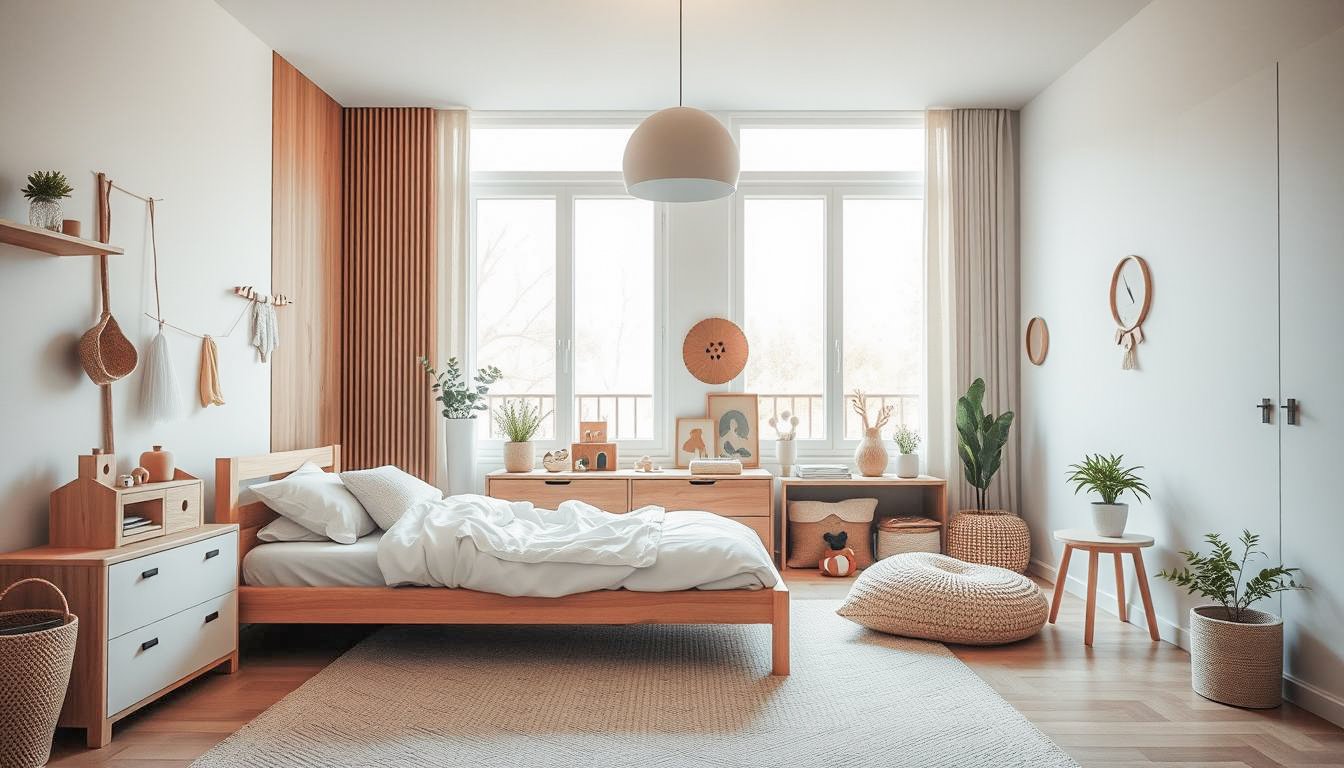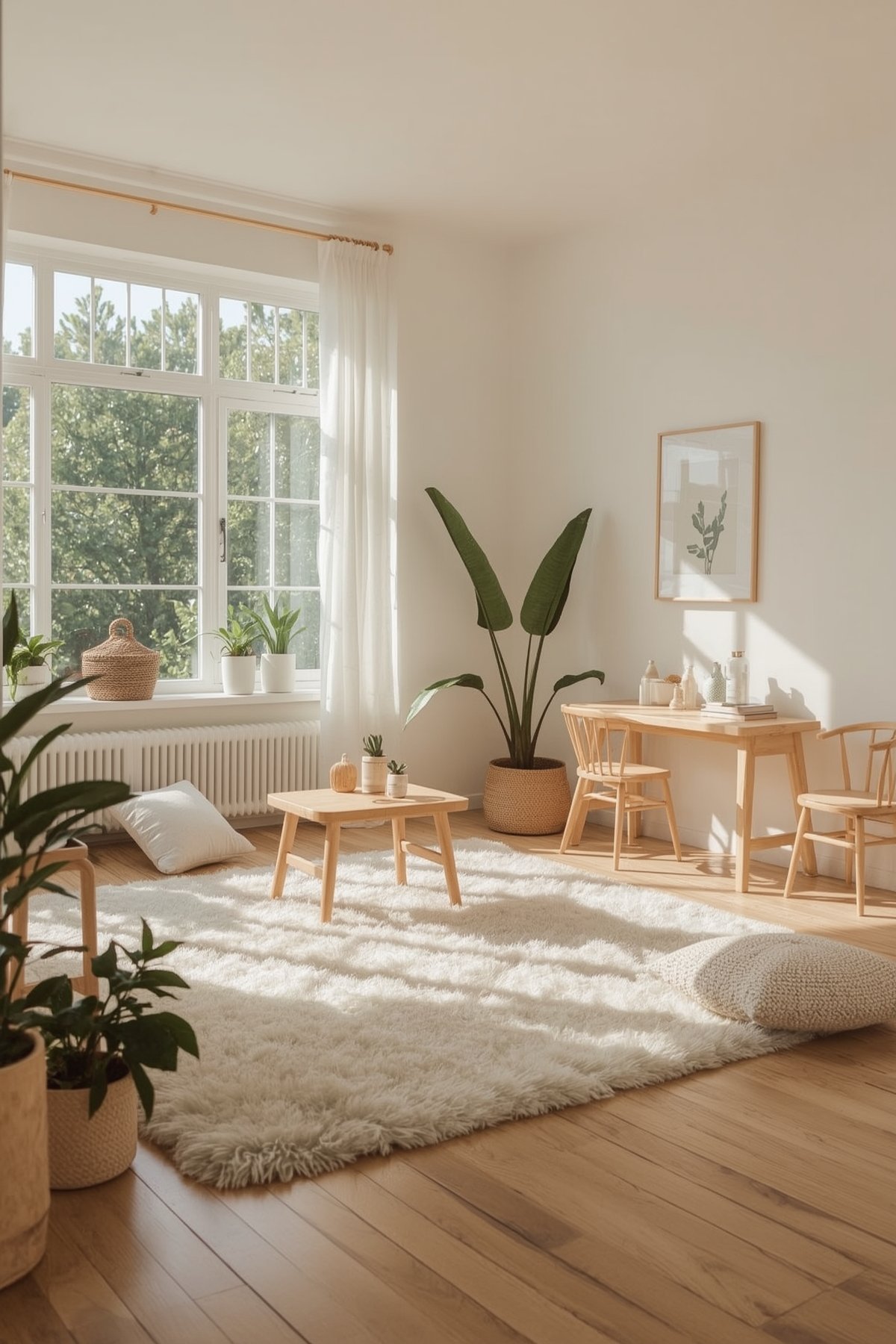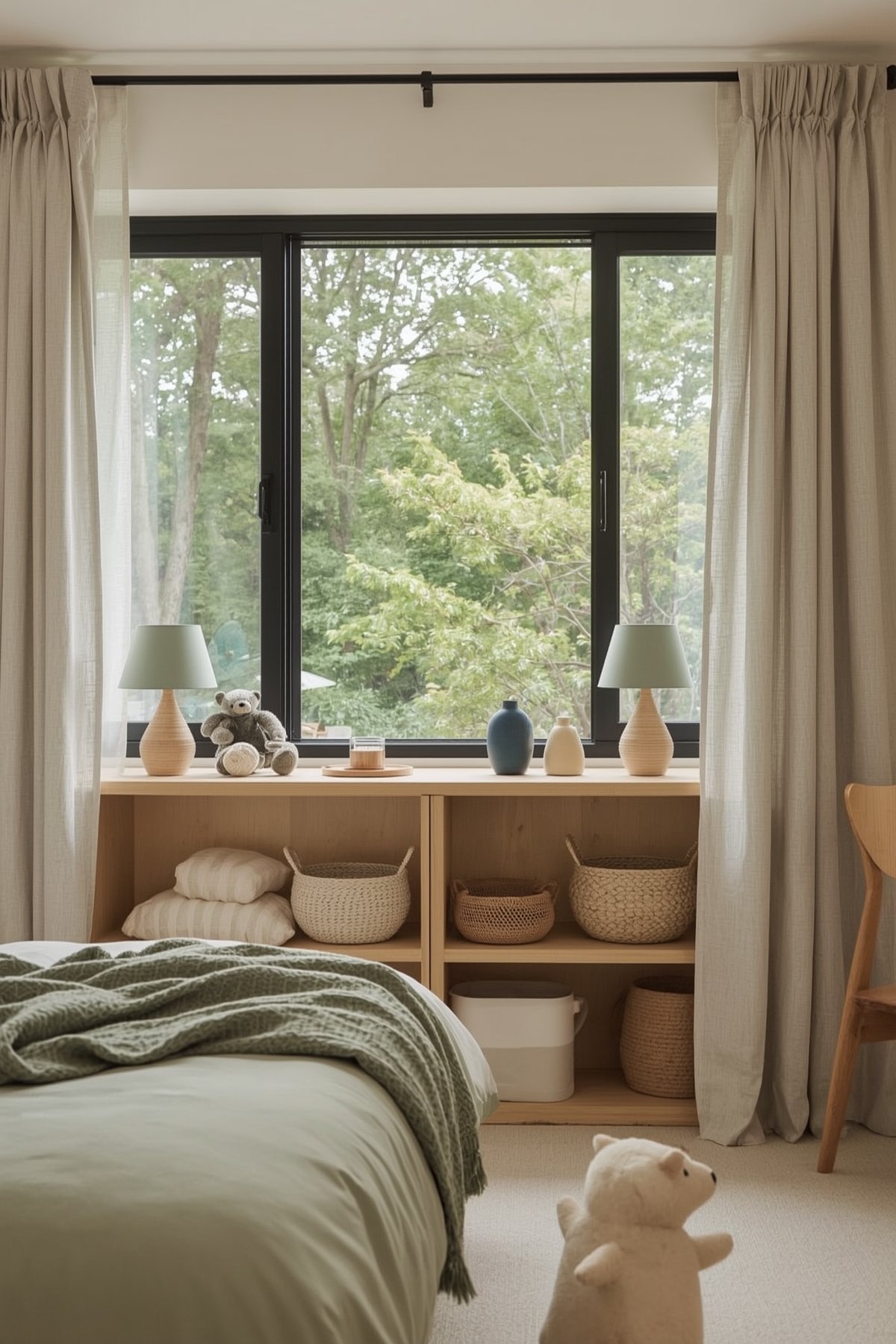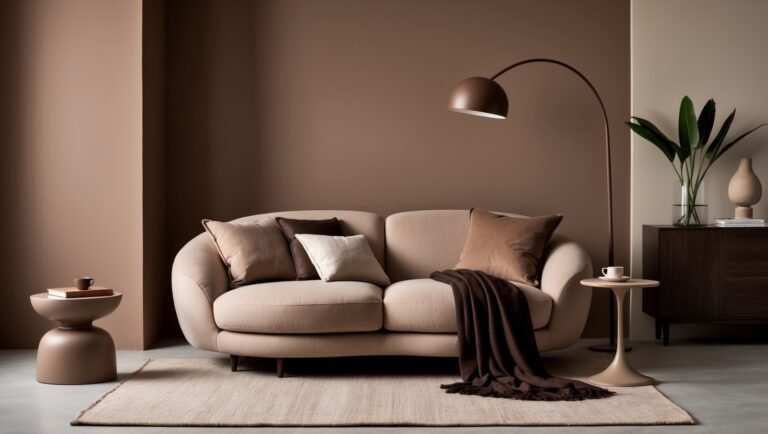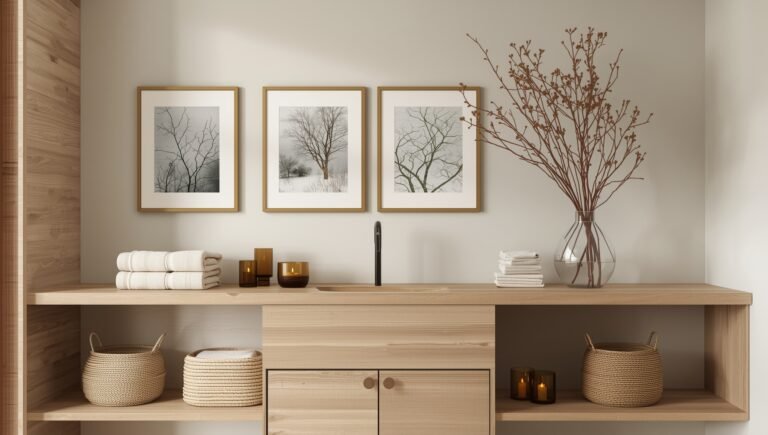Japandi Kids’ Room Magic: 18 Stylish Ideas to Calm & Inspire
Creating a calm and inspiring space for your child can be tough. Now, I want to show you how to make a kids’ room design with Japandi style. It combines the best of Japanese and Scandinavian designs.
The Japandi style is all about minimalism, natural materials, and functionality. It makes a calm place that helps your child grow. By adding these elements, you can make a room that looks great and helps your child develop.
Key Takeaways
- Create a serene atmosphere with a neutral color palette.
- Incorporate natural materials like wood and bamboo.
- Opt for minimalist decor and furniture.
- Use Scandinavian-inspired textiles for added coziness.
- Bring in plants for a touch of greenery.
The Essence of Japandi Style for Kids Room
Japandi design for kids room is more than a trend. It’s a thoughtful way to make spaces that help kids grow. It combines Japanese simplicity with Scandinavian warmth, making kids’ rooms both beautiful and good for their development.
The Fusion of Japanese and Scandinavian Design
Japandi style mixes Japanese elegance with Scandinavian coziness. This blend creates spaces that look great and work well. It’s perfect for kids’ rooms.
Key elements of this fusion include clean lines, few decorations, and natural materials. These features make a calm and organized space that helps kids grow.
Benefits of Japandi Design for Kids’ Development
Japandi design does more than look good. It supports kids’ well-being and growth. Minimalism reduces distractions, helping kids stay focused and calm.
Using natural materials and textures makes the space warm and cozy. This invites kids to feel at home. Japandi design teaches kids about simplicity and living with nature.
18 Japandi Kids Room Design Ideas
Explore our 18 Japandi kids room design ideas. They mix natural materials with modern simplicity. Japandi style blends Japanese and Scandinavian design for stylish, functional kids’ rooms.

Key Elements That Define Japandi Kids Spaces
Japandi kids rooms have minimalist aesthetics, natural materials, and focus on function. Use wooden furniture, bamboo accents, and neutral colors to get this look.
The Scandinavian part adds coziness, while Japanese design brings simplicity and mindfulness. This mix makes a space that’s calming yet engaging for kids.
How These Ideas Balance Function and Aesthetics
Japandi design is great at mixing form and function. For instance, modern kids room furniture looks good and does more, like storage beds or desks with shelves.
By focusing on functional design for kids, Japandi rooms help kids play, learn, and grow in a tidy space. This balance is key for a room that’s both pretty and supports a child’s growth.
Natural Materials and Textures
Natural materials are key in Japandi design. They mix organic textures with modern simplicity. This creates a calm and welcoming space for kids.

Using natural materials makes a room feel warm and cozy. Let’s look at three ways to add these elements to a child’s room.
Wooden Furniture with Clean Lines
Wooden furniture is central to Japandi design. It looks modern and sophisticated with clean lines. Choose wooden pieces with a natural finish for warmth. A wooden bed frame or simple dresser keeps the look minimalist.
Bamboo and Rattan Accents
Bamboo and rattan add texture and interest to a room. They’re sustainable and eco-friendly. Use them for lighting, baskets, or a woven wall hanging for a cozy feel.
Natural Fiber Rugs and Textiles
Natural fiber rugs and textiles add warmth and comfort. Pick rugs from jute or sisal. Use linen or cotton for bedding and curtains. They add texture and calm the atmosphere.
By using natural materials, you make a Japandi kids’ room beautiful and practical. It’s a peaceful space for your child to grow and learn.
Calming Color Palettes
Designing a Japandi kids’ room focuses on the color palette. It sets the mood for calmness. Choosing the right colors is key to a child’s mood and behavior.
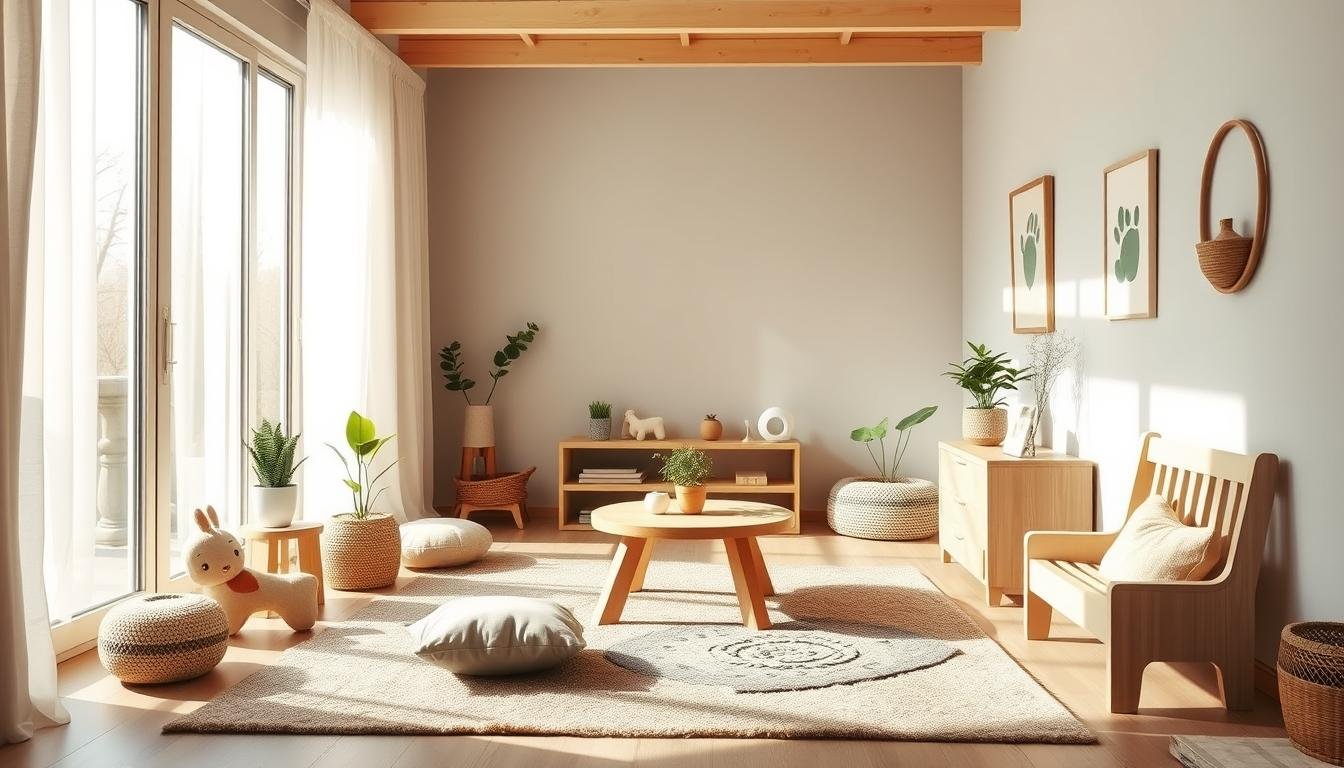
A Japandi color palette includes neutral tones and natural textures. It creates a soothing atmosphere. We’ll look at three design ideas for a calming Japandi kids’ room.
Neutral Walls with Subtle Accents
Neutral walls are a key part of Japandi design. Soft colors like beige or cream make the room calm. Adding natural wood or woven baskets adds texture and interest.
Earth Tones and Muted Colors
Earth tones and muted colors are also key in Japandi design. Sage green, sandy beige, and misty blue bring calmness. These colors can be used in walls, bedding, or curtains for a soothing room.
Monochromatic Schemes with Texture
Monochromatic colors with different textures add depth. Using various shades of one color, like blue, creates a calm space. Mixing textures like linen, wood, and wool adds complexity without bold colors.
Using Japandi color palettes in your child’s room makes it calm and serene. It supports their emotional and psychological well-being. Choose neutral walls, earth tones, or a monochromatic scheme with texture for a peaceful space.
Functional Furniture and Layout Solutions
Making a kids’ room functional is about finding the right mix of looks and use. Japandi design shows us that looks and function go hand in hand. We’ll look at three key ideas: low platform beds, storage furniture that does it all, and simple study and play spots.
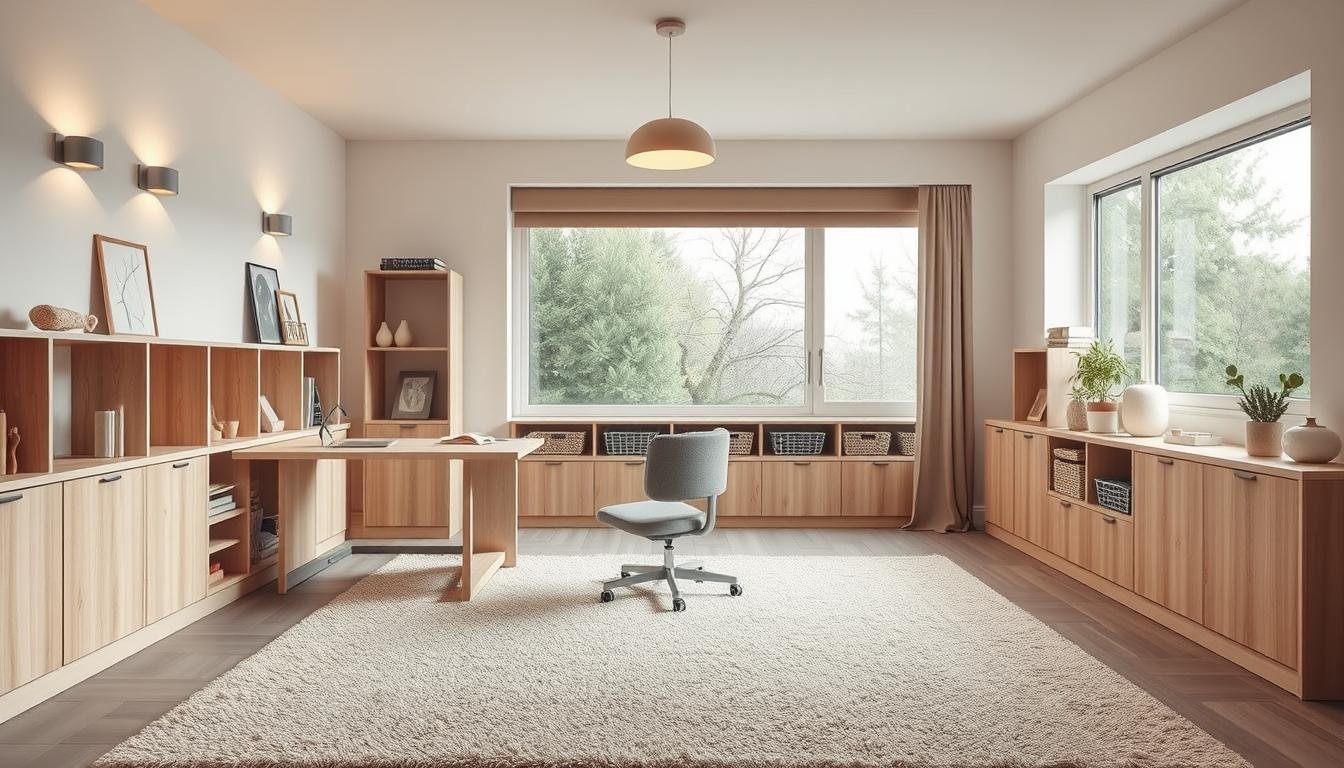
Low Platform Beds
Low platform beds are a big part of Japandi design. They offer a minimalist and uncluttered sleeping spot that makes the room feel bigger. The bed’s low height means less space for clutter under it.
Multifunctional Storage Furniture
Multifunctional storage furniture is key for a tidy kids’ room. Items like storage ottomans or desks with shelves keep things organized. They help keep toys, books, and clothes in their place, making the room neat and ready for play or study.
Minimalist Study and Play Areas
A simple study and play area is vital for kids’ creativity and focus. A clean space without distractions helps kids learn and dream. Japandi design’s focus on simplicity makes it easy to set up a calm area for kids to grow.
In short, the right furniture and layout are essential for a Japandi kids’ room. With low platform beds, storage that does it all, and simple study and play spots, you can make a room that’s both beautiful and useful. It supports your child’s needs and helps them feel calm and happy.
Mindful Décor and Accessories
Exploring Japandi design, I find calm décor and accessories for kids’ rooms. Japandi is more than looks; it’s about well-being and peace. We’ll look at three ideas for mindful décor and accessories to make your child’s room cozy.
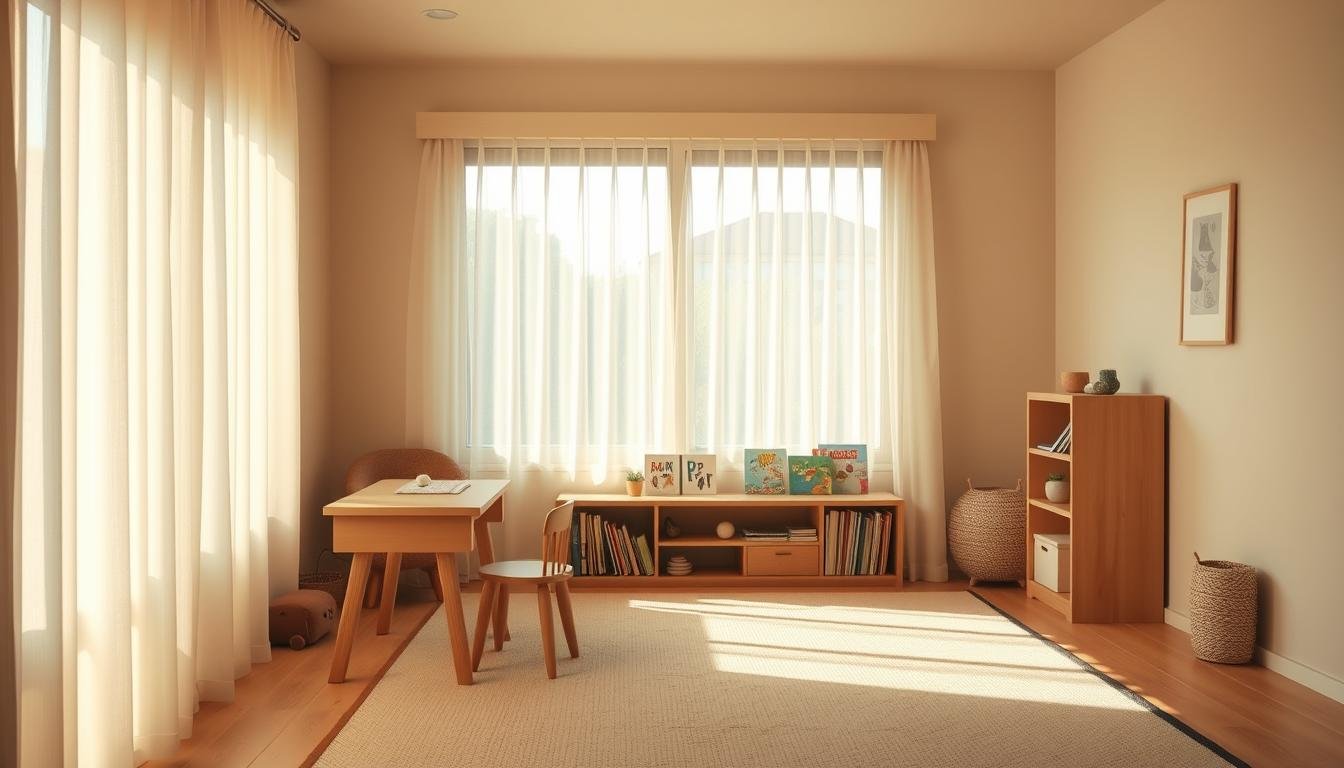
Design Idea10: Paper Lanterns and Pendant Lighting
Paper lanterns and pendant lights add warmth and coziness to a Japandi kids’ room. They light up the room and decorate it. Soft, warm light helps kids relax and feel calm. Choose simple yet unique designs to keep the Japandi look.
Design Idea11: Minimalist Wall Art and Décor
Minimalist art and decor keep a Japandi room calm and clean. A few, well-chosen pieces add personality without clutter. Choose nature or abstract designs to keep the room peaceful and connected to nature. This makes the room beautiful and peaceful.
Design Idea12: Indoor Plants for Natural Elements
Adding indoor plants brings nature into your child’s room, fitting Japandi’s nature theme. Plants are pretty and clean the air, making the room calm. Low-maintenance plants like succulents teach kids about nature and responsibility.
With these mindful décor and accessories, you can make a Japandi kids’ room that’s both lovely and good for your child. Each piece, from lanterns to plants, helps create a space that’s pretty and peaceful.
Organization and Clutter-Free Living
Japandi design focuses on minimalism and function. It’s perfect for a clutter-free kids’ room. It blends Japanese and Scandinavian styles for a calm space. This helps kids grow happy and creative.

Effective Storage Solutions
Hidden storage is key in Japandi design. It keeps clutter away. Furniture with storage, like beds with drawers, helps keep things tidy.
This method teaches kids about organization. It’s important for them to learn.
Curated Displays
Open shelving with chosen items adds beauty and order. It lets parents pick what’s on display. This makes the room look good and keeps it organized.
It teaches kids to value their things. They learn to keep things in order.
Mindful Toy Organization
Using mindful toy organization systems is vital. Baskets and bins keep toys neat. They make cleaning up easier and teach kids to care for their things.
These Japandi design ideas make a room both pretty and organized. It’s good for kids’ health and happiness. It’s a great place for play, study, and rest.
Age-Specific Japandi Room Adaptations
Japandi style is great for kids’ rooms, from nurseries to teenage retreats. It’s both stylish and practical. As kids grow, their rooms need to change too.
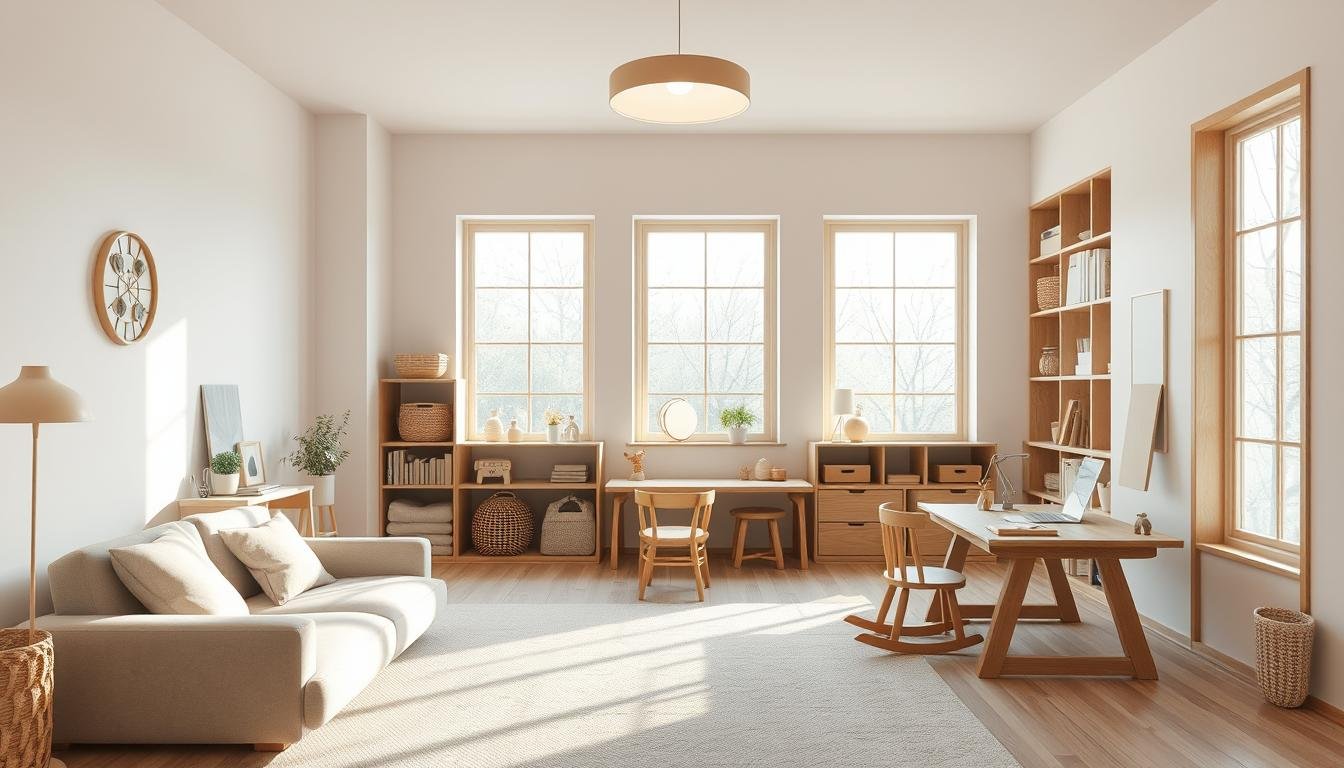
Creating a Japandi Nursery with Sustainable Elements
A Japandi nursery is all about sustainable elements and calm. Use solid wood and organic fabrics. Add plants and eco-friendly paints for more green.
These nurseries have soft colors for peace. Choose furniture that’s simple and clean. This makes the room tidy and calm for your little one.
Designing School-Age Rooms with Functional Workspaces
For older kids, Japandi design adds functional workspaces. This boosts learning and creativity. Use furniture that stores things to keep the room neat.
A Japandi room for school-age kids might have a study area. It should have a simple desk and a comfy chair. Natural touches, like a woven basket, add warmth.
Tween and Teen Japandi Retreats
Tweens and teens need a place to chill, study, and show their style. A Japandi retreat for them has minimalist decor and comfy furniture.
Go for a neutral color scheme with a bit of color for a personal touch. Natural textures, like a jute rug, make the room interesting.
FAQ
What is Japandi style, and how can it be applied to a kids’ room?
Japandi style mixes Japanese and Scandinavian designs. It focuses on being simple, using natural materials, and being functional. For a kids’ room, use natural materials, soft colors, and useful furniture. This makes a peaceful and inspiring space.
How can I incorporate natural materials into my child’s Japandi-inspired room?
Use wooden furniture, bamboo, and rattan for natural accents. Choose natural fiber rugs and textiles. These add warmth and keep the room simple.
What are some calming color palettes that can be used in a Japandi kids’ room?
Choose neutral walls with soft accents, earth tones, or monochromatic colors. These colors help your child relax and feel calm.
How can I maintain a clutter free environment in my child’s Japandi inspired room?
Use hidden storage, open shelving, and organized toys. These ideas keep the room tidy and peaceful.
Can Japandi design be adapted for children of different ages?
Yes, Japandi design fits all ages. You can make a nursery, school room, or teen retreat. Tailor Japandi to your child’s needs for a calm space.
What are some functional furniture ideas for a Japandi kids’ room?
Choose low beds, storage furniture, and simple study areas. These ideas keep the room open and clutter-free, promoting creativity.
How can I add decorative elements to my child’s Japandi inspired room without cluttering it?
Add paper lanterns, simple art, and plants. These elements add calm and nature without cluttering the space.
The Bottom Line
Designing a Japandi-inspired kids room is about making a space that helps your child grow. Use natural materials, soft colors, and useful furniture. This way, you make a space your child will love.
A japandi kids room mixes Scandinavian and Japanese styles. It makes a minimalist room that is both pretty and good for your child. This design is simple, useful, and connects to nature.
A good kids room layout is key for a calm and fun space. Choose furniture that does more than one thing. This makes a room that grows with your child.
Adding these elements makes a peaceful and growing space for your child. With these ideas, you can make a Japandi room that looks great and works well.

ABOUT the AUTHOR
TOKI; INTERIOR DESIGN & lifestyle CONTENT CREATOR.
Hey there! I’m Toki—the design-obsessed brain behind Dwell Studio 24. I’m a content creator passionate about interior design, photography, and creativity, living in a 77-year-old house with my husband and our awesome three kids. I write about interior design, furniture, home topics, and my lifestyle, including travel, recipes, skincare, and daily routines. I hope to inspire your next project and lifestyle!
ABOUT the AUTHOR
TOKI; INTERIOR DESIGN & lifestyle CONTENT CREATOR.

Hey there! I’m Toki—the design-obsessed brain behind Dwell Studio 24. I’m a content creator passionate about interior design, photography, and creativity, living in a 77-year-old house with my husband and our awesome three kids. I write about interior design, furniture, home topics, and my lifestyle, including travel, recipes, skincare, and daily routines. I hope to inspire your next project and lifestyle!
ABOUT the AUTHOR
TOKI; INTERIOR DESIGN & lifestyle CONTENT CREATOR.

Hey there! I’m Toki—the design-obsessed brain behind Dwell Studio 24. I write about interior design, furniture, home topics, and my lifestyle, including travel, recipes, skincare, and daily routines. I hope to inspire your next project and lifestyle!

